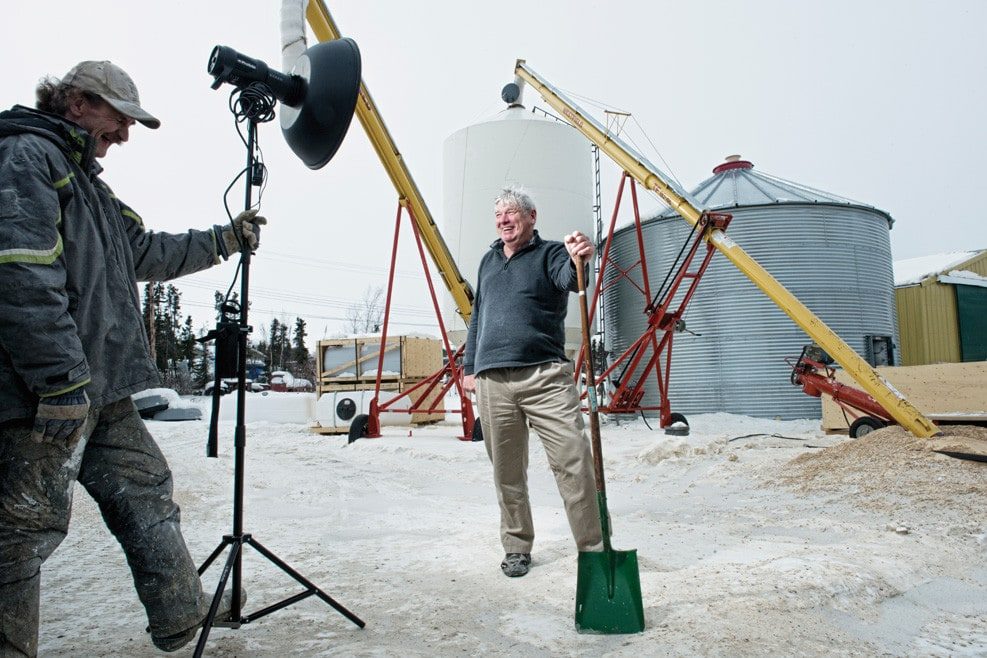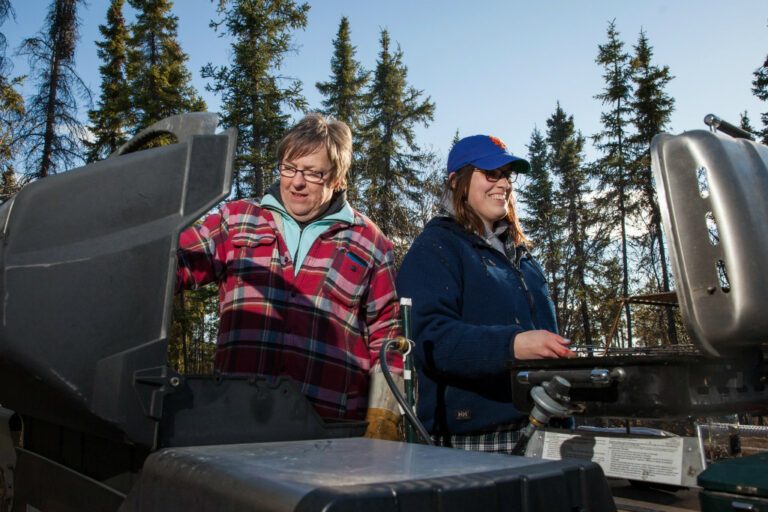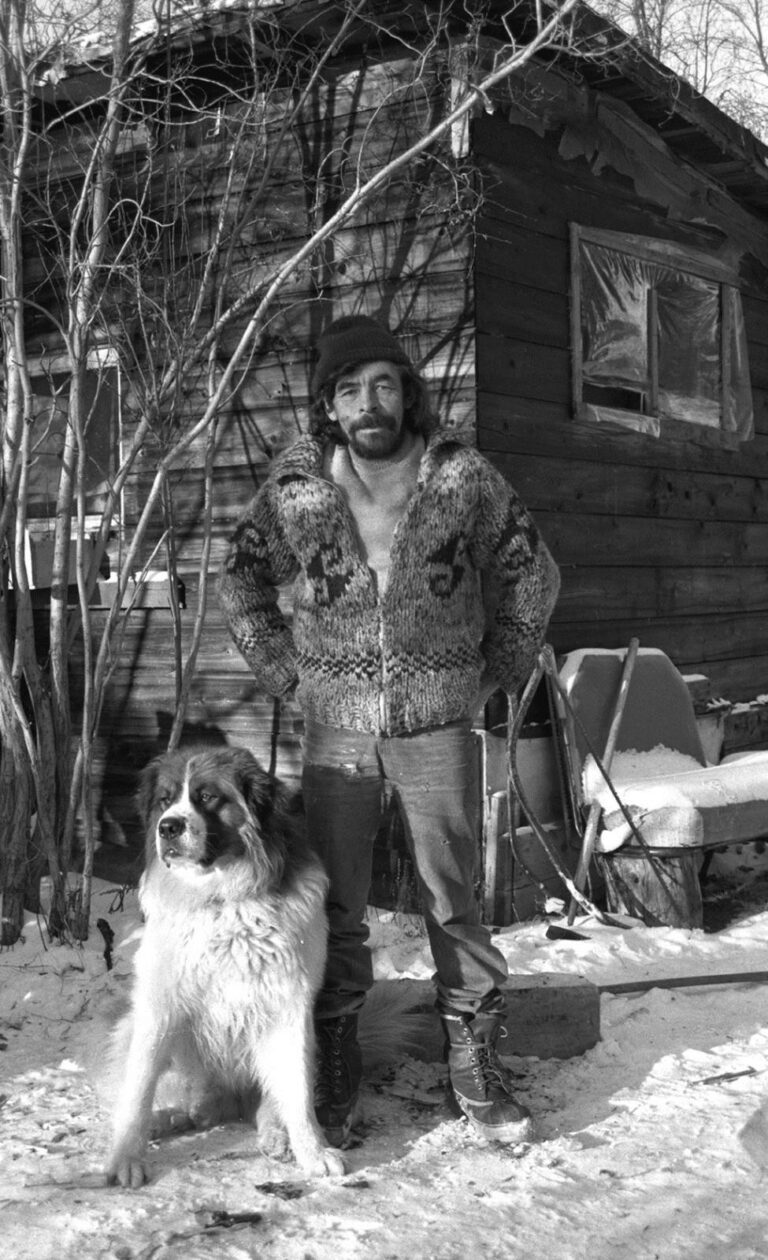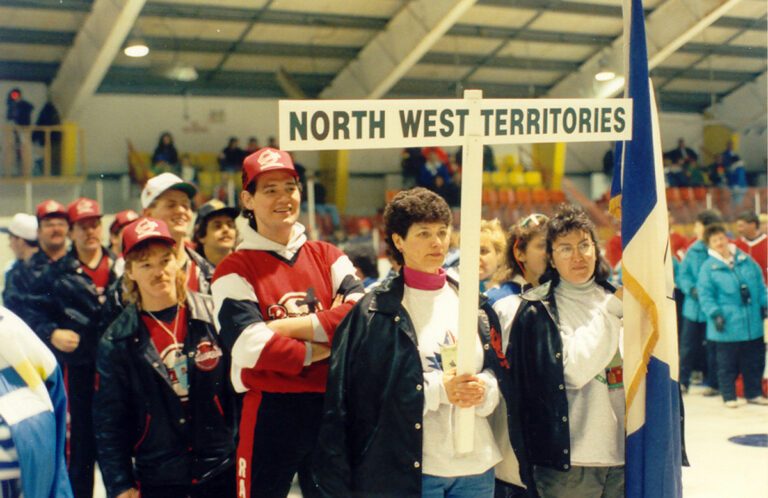YK has more pellet boilers than anywhere in Canada!
by Jack Danylchuk
Welcome to Yellowknife, Canada’s pellet boiler capital. Not the first choice for a boast to tourists who want to see where the ice road to the diamond mines begins, but it’s one that former Mayor Gordon Van Tighem delights in, especially when thoughts are on heating costs.
North America’s self-proclaimed Diamond Capital also has the largest number of wood pellet boilers of any community on the continent, says Van Tighem – more than 230 large, medium and small are in operation.
One thousand kilometres north of the nearest oil refinery, Yellowknife lives and works on the front line of volatile fossil fuel prices. A decade ago, the owner of a small fiberglass factory thought wood pellets might be the answer to his energy dilemma. A fiberglass shop needs a constant change of air – the cost of heating and venting is like blowing money out the window — so Bruce Elliott experimented with wood pellets. He concluded there was a business in it and five years ago sold the territorial government on his vision.
“It took a bit of convincing, but once we showed them it worked, their response has been good,” says Elliott, now owner-operator of Arctic Green Energy.
The first project was the North Slave Correctional Facility in Yellowknife. Elliott installed the boilers, and under a 10-year contract, sells the heat to the government below the current price of fuel oil.
“It has cost them nothing, and they get green energy.”
Prior to the summer of 2008, oil prices were more than $1.20 per litre, resulting in payback periods as low as three to five years for converting to wood pellets. The government moved quickly to take advantage of the savings, converting many of its buildings in the capital, including the Legislative Assembly. At the current cost of fuel oil in Yellowknife, biomass heating projects reduce the cost of heating from 40 to 50 per cent. Cost isn’t the only advantage. The question is still being debated, but proponents of pellets and high-efficiency boilers claim their heating system is superior to even natural gas in reducing greenhouse gas emissions.
According to Glen Abernethy, the minister responsible for the Public Utilities Board, the GNWT saved close to 10 million litres of fuel oil and reduced greenhouse gas emissions by over 25,000 tonnes between 2007 and the end of 2012 – a cost savings of $1.8 million.
But the potential for savings is even greater, says a report by Arctic Energy Alliance.
“If every public building within Yellowknife was heated by wood pellets the demand would be 200,000 tonnes per year. A further 1.5 million litres of heating oil could be displaced in government buildings throughout the NWT.”
John Carr, a spokesman for Arctic Energy Alliance, says the regulatory system is still learning how to deal with wood pellet boilers. There have been some questions about building code compliance. “There has been a learning curve, but everyone is getting familiar with it. They see now that it works, that it’s safe and economic.”
The government has invested $60 million on weaning as many of the Northwest Territories’ 45,000 residents from fuel oil as possible, providing incentives to businesses and homeowners to convert to pellet boilers.
A recent government study found that pellet fuel consumption in the NWT is approaching 18,000 tonnes a year – still well short of the estimated 30,000 tonnes needed to support a pellet mill, but Yellowknife’s plan for a district heating system, the conversion of more private buildings, and growing demand in Europe and North America for pellet fuel is expected to fill the gap.
In its scaled-back version, which kicks to the curb the grand plan to tap geothermal heat from the former Con mine site, the City’s district heating plan adds a dozen rather than 39 buildings to the wood boiler list. The territorial government plans to convert as many of its buildings to pellet heat as is practicable and Northern Property REIT, the territory’s largest landlord, is taking the same course, which will further boost demand.
Current demand for pellets in the territory is met by mills in La Crete, Alta. — more than 800 kilometres from Yellowknife — and northern British Columbia where the forest industry is harvesting trees destroyed by a plague of insects.
Sourcing wood pellets closer to home would reduce the greenhouse gas emissions from trucking and could provide economic stimulus. The NWT Biomass Energy Strategy released two years ago aims to “work with the private sector and Aboriginal development corporations to identify viable business models to produce pellets and/or woodchips in the NWT.”
Producing wood pellets at a competitive price would help stabilize the territory’s supply of pellets, says Jim Sparling, manager of climate change programs for the GNWT’s department of Environment of Natural Resources.
“If you’re buying in bulk from La Crete, you can get them delivered in Yellowknife for about the equivalent of 60 cents a litre for heating oil right now. But there’s some concerns about the long-term sustainability of that,” says Sparling.
Environment Minister Michael Miltenberger says the territorial government is shifting its focus “from getting people to convert, to the second step, developing our own northern industry. As we convert more government and commercial buildings, and as the price of oil goes up, it will be more and more attractive. We just have to make sure that it’s done in the right way in the right place where we have sustainability of supply,” he says.
Hay River entrepreneur Brad Mapes intends to create an instant forest industry in the NWT. He has the support of the territorial government and First Nations, and is pressing ahead with plans to build a $10 million mill near Enterprise that will convert fast-growing hardwoods to pellets at the rate of 60,000 tonnes a year. Across North America, pellets have captured imaginations and investment dollars. A report from the International Energy Agency Task Force says that production doubled between 2006 and 2010 to 14 million tons and is expected to double again in the near future.
Elliott’s Arctic Green Energy brings three B-trains of pellets a week to Yellowknife from La Crete. He has looked at the economics of pellet manufacturing.
“Thirty per cent of round wood is lost to drying, so it’s not really profitable unless it’s run with a sawmill. La Crete is struggling because of its distance from major markets. We’re relatively close to them competing with other southern manufacturers.”
Elliott has a new high-efficiency boiler that can use pellets, chips or round wood and is also promoting combined heat and power projects for smaller communities that rely on diesel generators.
“We can do that cheaper than oil,” he says. “We’ve done a proposal for the government. The communities can use feedstock on hand – fire-burned trees and quick-growing willows to generate sustainable biomass and portable chippers. Boilers will burn chips not pellets. Now that First Nations are getting interested in moving to green energy, this will spread to all the remote northern communities.”







